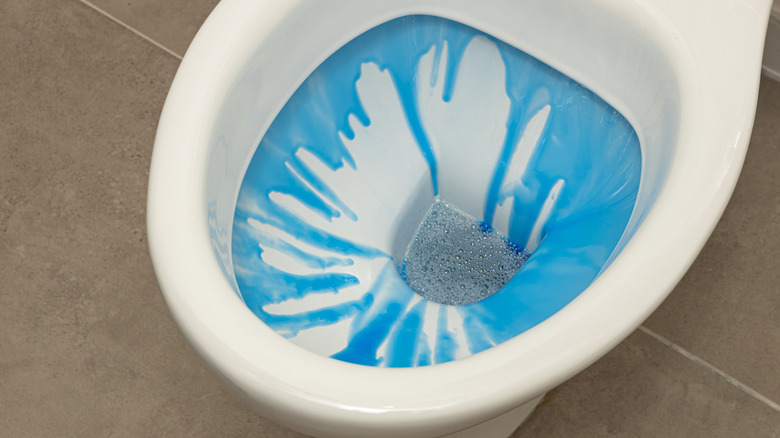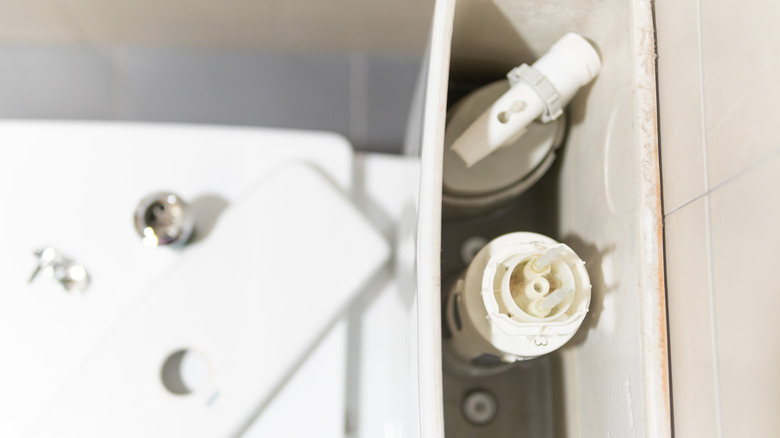Why Do Some People Put Fabric Softener In Their Toilet Tank (And Is It A Good Idea)?
No one likes a toilet that stinks to high heaven. In the quest for a fresher, more pleasant bathroom, some people have started to try an unusual so-called hack: adding fabric softener to their toilet tank. At first glance, it makes sense. Fabric softener has a crisp, fresh scent, so why not use it to cure a smelly toilet?
The idea is that with every flush, the water releases a pleasant smell, getting rid of bad, unwanted toilet odors. Some even claim it helps clean and disinfect the toilet bowl. But hold on. Just because something sounds good online doesn't necessarily mean it's a good idea. In fact, this trick might even do more harm than good.
Fabric softeners work by using oil-based chemicals that coat the fibers of your clothes, towels, and sheets. It's that additional oily coat that makes the laundry soft! In order to do this effectively, fabric softener is designed not to mix with water — it actually repels it. Otherwise, fabric softener would wash away during the rinse and lose its softening effect. But because it is hydrophobic, fabric softener in the toilet tank can create serious problems for your plumbing, causing more harm than good!
The dangers of putting fabric softener in your toilet
There are several concerns about putting fabric softener down your toilet. First, it can clog your drains! Because of its hydrophobic quality, fabric softener will stick to anything that isn't water, including the toilet tank, toilet bowl, and pipes. Over time, layers of fabric softener could cause clogs between your toilet tank and the toilet bowl, reducing the amount of water that flows with each flush. It can also build up further down in your drains, leading to serious blockages. If you don't want to have to unclog your toilets, you probably should keep fabric softener away from them.
What's more, fabric softener can damage the components that make your toilet flush properly. Toilets have several mechanical parts, including a flapper that controls water flow, a chain that connects it to a valve, and an overflow tube. These components need to function smoothly for the toilet to work correctly. However, because fabric softener sticks to surfaces that aren't water, it can cause these parts to break, leak, or get stuck.
Finally, there's one more reason to keep fabric softener away from your toilet — it's bad for the environment! Fabric softener contain many chemicals, some of which are harmful to aquatic life and contribute to algae blooms that disrupt ecosystems. Flushing these chemicals releases them into the local water system, increasing pollution and harming wildlife. So, it's best to skip this toilet cleaning hack.

